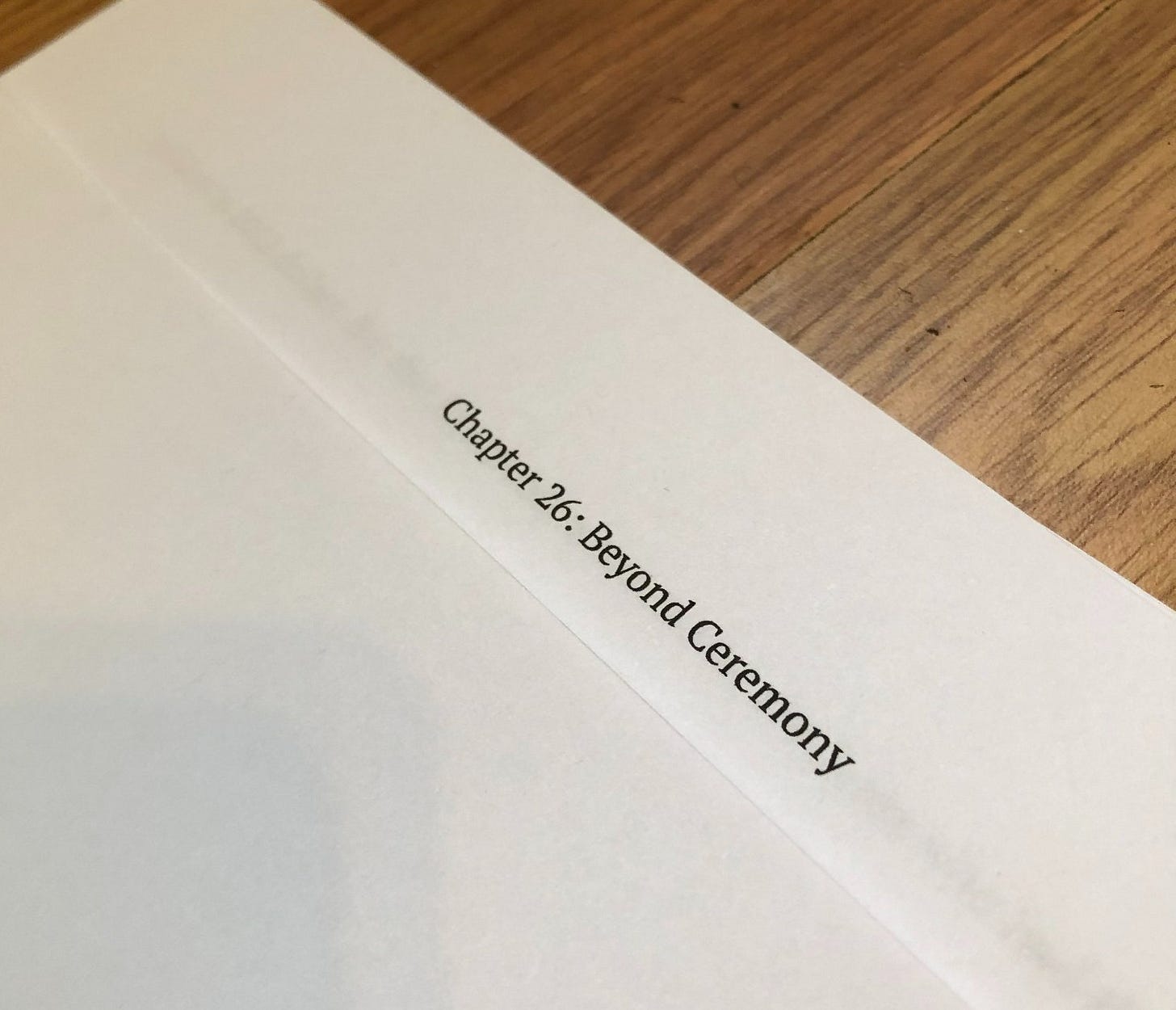The final chapter of the Built From the Fire manuscript
I’ve been holed up in my house just west of Greenwood all summer sculpting the final shape of Built From the Fire bit by bit. I’m making revisions, adding footnotes, and conducting a final sprint of key research all at once, while seeking inspiration to elevate my prose via fiction (One Hundred Years of Solitude by Gabriel Garcia Marquez) and nonfiction (The Yellow House by Sarah Broom). It’s a busy time.
But–and this is the part that’s still sinking in–I have managed to write an honest-to-goodness book from beginning to end. My editor hasn’t even asked me to change the last sentence (yet). This will be a new contribution to the historical understanding of Greenwood, building off the work of people that came before me and people that surround me still. Footnotes and quotation marks can’t quite convey how much history-making is a collaborative and iterative process, with one writer often picking up where another left off a century ago.
It’s a big book–it might even creak a little under the weight of its own ambition. We’ll see. But trying to tell the story of Greenwood requires the widest of lenses. There have been many dark hours here–the cataclysm we all know, as well as aftershocks that shook the foundations of individual families with cruel precision. There have been many success stories as well, today neatly packaged under the Black Wall Street mythos. Built From the Fire shines most, I think, as it explores how one extreme reflects off the other. Amidst tragedy, people find ways to reconstruct meaning in their lives. Behind public celebrations of progress, there is a hidden, human struggle.
This book has changed a lot for me since I began working on it four years ago. I started out wanting to build a historical diorama–a vivid recreation of Black Wall Street, with little models walking their set routes up and down Greenwood Avenue for my amusement. Then, I wanted it to be a polemic, a searing political argument that would prove America's sweeping sins across the 20th century in some way they haven't already been proven before. Now–and maybe this is the new gray hairs in my beard talking–I simply want this book to ring true. For the people in it to feel real, because they were, and are. All else is beyond my control, and shaping my work to other ends will ultimately undermine its integrity, its longevity, and its ability to connect with readers as anything beyond trivia or political ammunition.
More to come soon. Thanks for your patience.
My upcoming book on the history of Greenwood will be published by Random House in 2023. Subscribe below to receive updates on the book and more research and writing from me on black history.


Congratulations on writing that final sentence. We're all looking forward to reading it.
Well written and to the point. Looking forward to your participating in the Rosewood Centennial, January 2023.